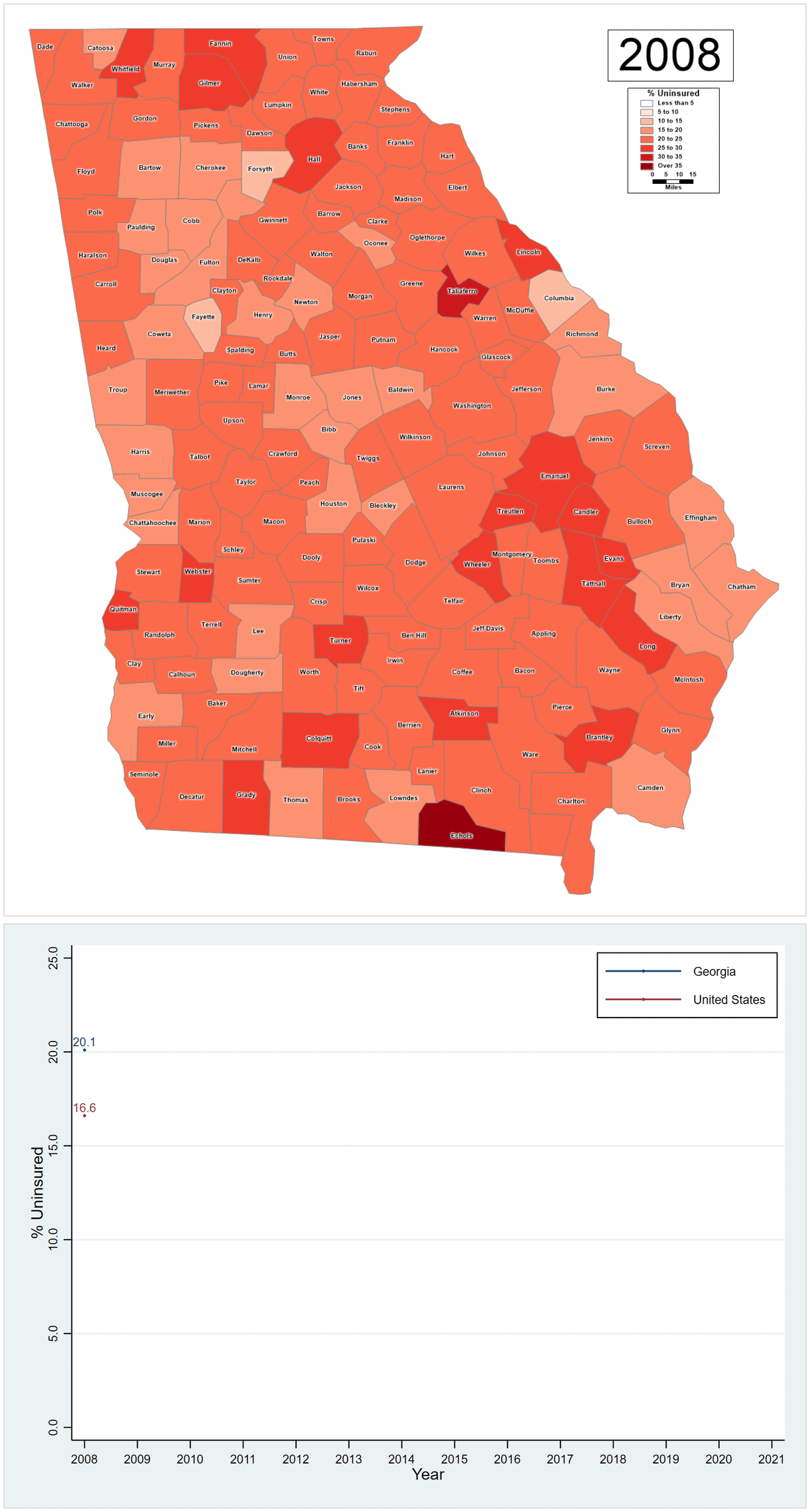What does health insurance coverage look like in Georgia? How has that changed since passage of the Affordable Care Act (ACA)? And was there any impact on coverage during the pandemic? To answer these questions, we can look to the Small Area Heath Insurance Estimates (SAHIE) data, recently updated through 2021.
About the data: every year since 2008, the Census Bureau has supplemented American Community Survey (ACS) data with administrative data such as Medicaid and Children’s Health Insurance Program (CHIP) participation records, and then aggregated tax return data to produce single-year estimates of insured and uninsured living in all counties in the United States. As a contrast, only 37 of Georgia’s 159 counties meet the 65,000-population threshold to receive single-year American Community Survey (ACS) estimates.[1]
The animation below (as Figure 1) shows change in the percentage of the population ages 64 and below[2] who lack health insurance over the period 2008 through 2021. Of particular interest are two years: 2014, the first year when the “individual mandate” of the ACA was in full effect,[3] and 2019, the year when that mandate was nullified.[4]

Footnotes:
[1] In this sense, SAHIE is similar to the Small Area Income and Poverty Estimates discussed in an earlier blog post . For more information about the SAHIE, please see https://www.census.gov/programs-surveys/sahie.html.
[2] The SAHIE restricts itself to this age band because being Medicare eligible, over 98% of people ages 65 and above are insured.
[3] The ACA required that individuals have health insurance meeting certain minimum requirements or pay a penalty. To assist individuals who neither received coverage from their employers nor were eligible to participate in government insurance programs (e.g., Medicare, Medicaid, TRICARE, CHIP, etc.), the Federal Government provided for the creation of health insurance exchanges from which people could purchase insurance. Many states run their own exchanges; in states like Georgia that opted not to create a state exchange, individuals needing to purchase insurance participate in a federally-run exchange. The ACA also offers insurance subsidies to low-income individuals. The initial open enrollment for these exchanges ran from October 2013 through March 2014, making 2014 the first year when we would observe an effect from the ACA.
[4] The Tax Cuts and Jobs Act of 2017 neutralized the individual mandate by rolling back the penalty to zero, effective in 2019.

